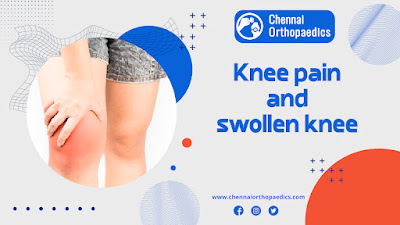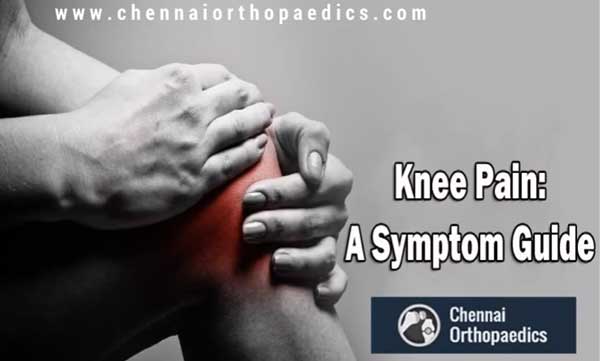Date :31-Mar-2023
 Does one knee look swollen when compared to your other knee? Is there any pain or discomfort in the swollen knee? Do you feel stiffness in the swollen leg? If yes, you might be a victim of a condition known as knee effusion, says Dr. Bharani Kumar Dayanandam, senior orthopaedic surgeon and trauma consultant at Chennai Orthopaedics.
Does one knee look swollen when compared to your other knee? Is there any pain or discomfort in the swollen knee? Do you feel stiffness in the swollen leg? If yes, you might be a victim of a condition known as knee effusion, says Dr. Bharani Kumar Dayanandam, senior orthopaedic surgeon and trauma consultant at Chennai Orthopaedics.
Knee effusion aka ‘water on the knee’ occurs due to fluid accumulation in the knee joints. It can be caused by different reasons that might be acute or chronic. Acute causes include trauma like ligament tears, meniscus tears, broken bones, etc. Chronic conditions include diseases like osteoarthritis, rheumatoid arthritis, gout, infections like bursitis, tumors, etc. “It is very important to determine the exact cause of the knee swelling in order to effectively treat the condition,” says Dr. Bharani Kumar.
“In most cases, if the underlying cause is not too serious, then the best course of action is ‘RICE’”, says Dr. Bharani Kumar. RICE stands for Rest, Ice, Compress and Elevate. Resting your swollen knee will prevent further swelling. Applying ice packs helps to reduce swelling and alleviates pain. Applying a compress like a bandage or a wrap prevents further fluid build-up in the knee. Keeping the swollen knee in an elevated position will reduce the blood flow to the affected region, thereby reducing inflammation and pain. If the affected knee feels warm to the touch and has redness in the area, it is vital to visit a doctor without any delay as it might indicate infections in the knee.
“In my experience knee effusion is commonly seen in sports persons and older population,” says Dr. Bharani Kumar. Trauma is the number one cause of knee effusion and can adversely affect one’s sports aspirations. Dr. Bharani Kumar is of the opinion that RICE therapy is more of a first aid than treatment in such cases. Therefore, it is best to approach a doctor if the symptoms do not abate after a few hours of RICE therapy.
When the effusion is quite large causing immense pain, joint aspiration provides immediate relief. Joint aspiration is done by inserting a needle into the swollen knee to remove the excess fluid. The fluid is sent to the lab to analyze for the presence of blood, bacteria, or salt crystals to determine the cause of the swelling. Depending on the root of the swelling, further treatment will be decided.
Knee effusion can turn into a serious condition if left untreated. It can cause irreversible damage to the knee cartilage resulting in a limited range of motion, thereby affecting motility. “Timely intervention and proper treatment of knee effusion will ensure that there is no long-term damage to the knee,” reassures Dr. Bharani Kumar.




 Does one knee look swollen when compared to your other knee? Is there any pain or discomfort in the swollen knee? Do you feel stiffness in the swollen leg? If yes, you might be a victim of a condition known as knee effusion, says Dr. Bharani Kumar Dayanandam, senior orthopaedic surgeon and trauma consultant at Chennai Orthopaedics.
Does one knee look swollen when compared to your other knee? Is there any pain or discomfort in the swollen knee? Do you feel stiffness in the swollen leg? If yes, you might be a victim of a condition known as knee effusion, says Dr. Bharani Kumar Dayanandam, senior orthopaedic surgeon and trauma consultant at Chennai Orthopaedics.








